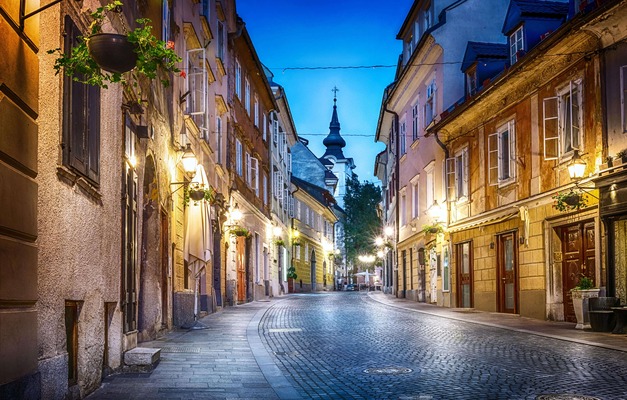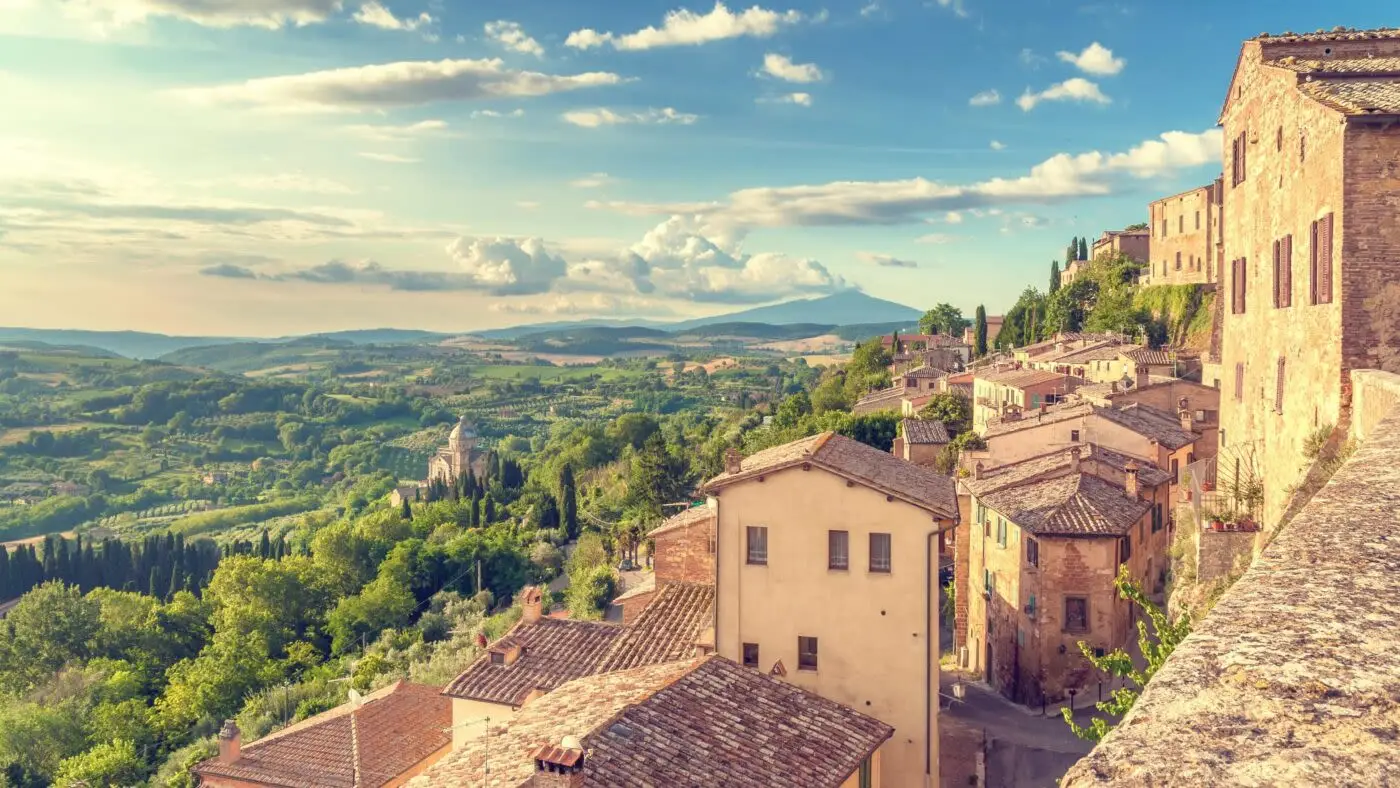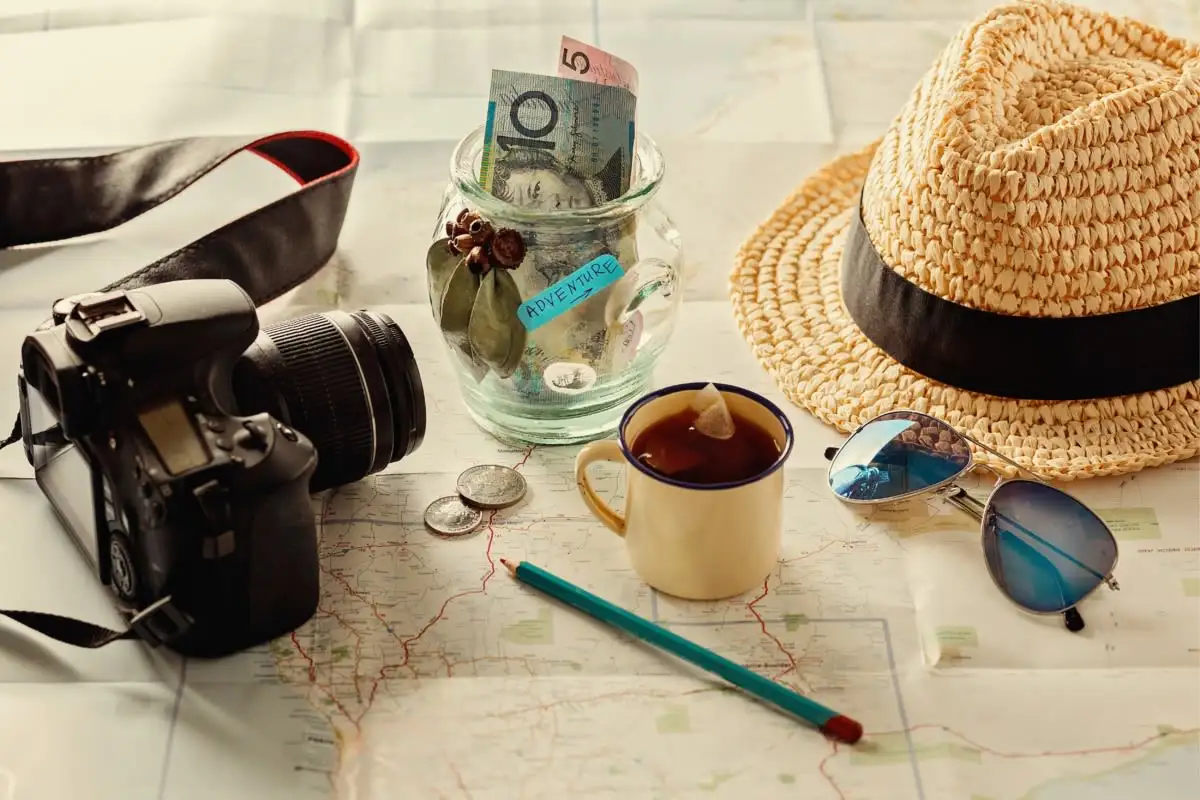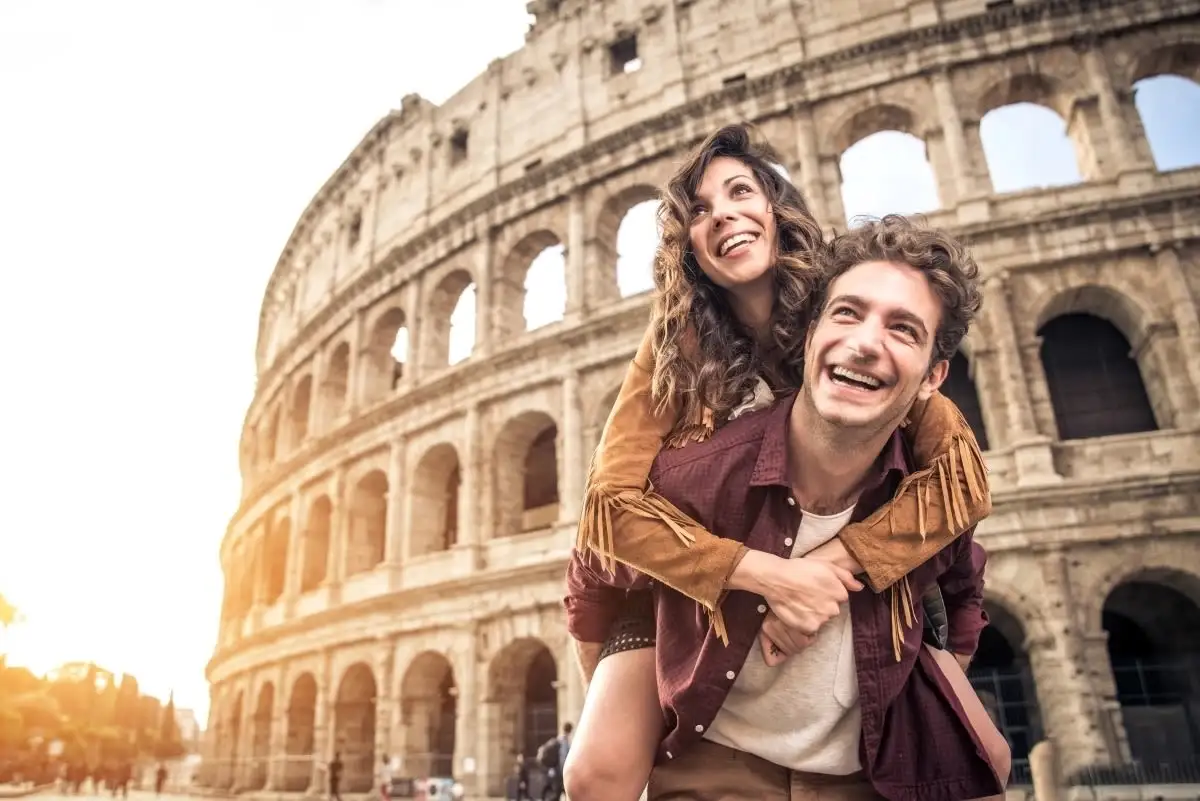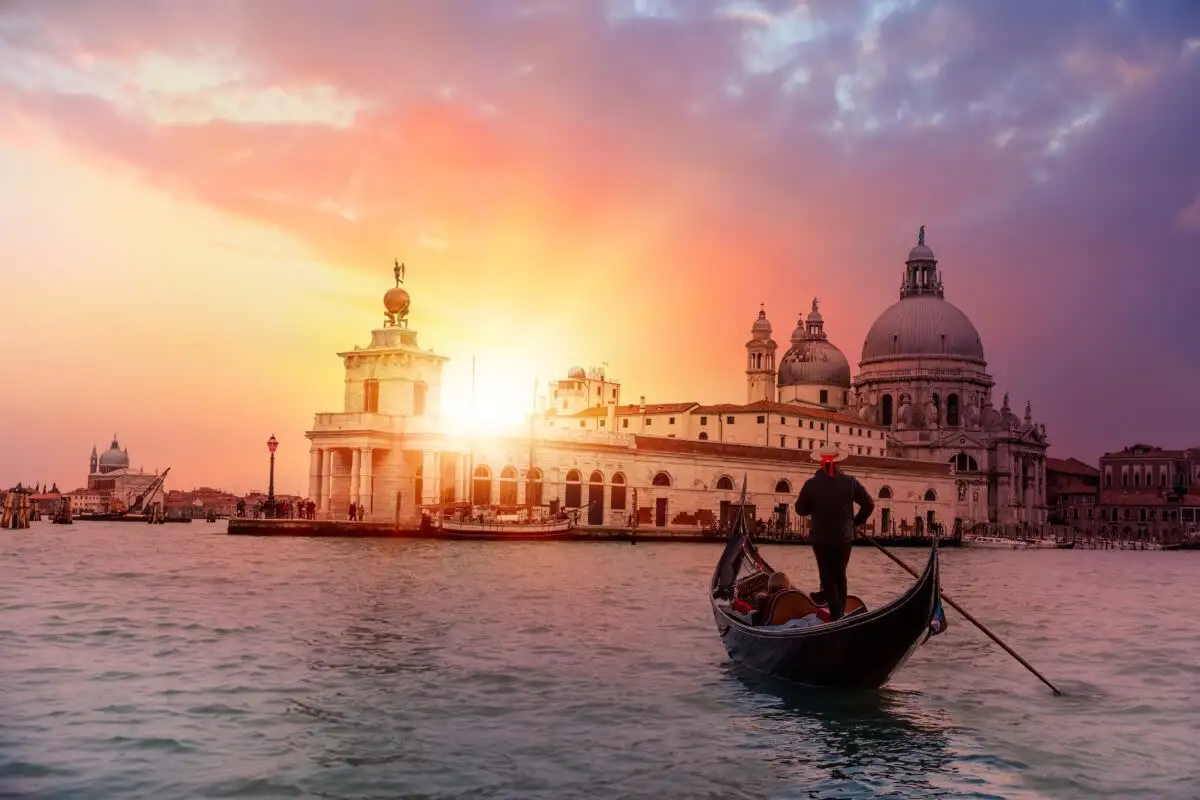
Beauty by Sea and by Land: a 7-Day Trip from Cinque Terra to Tuscany
 7 Day Tour of Cinque Terre and Florence
7 Day Tour of Cinque Terre and Florence
Overview
Trip Map
Itinerary
Inclusions
Reviews


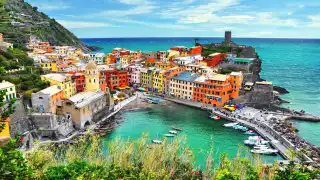




7 Days 6 Nights
Best Time: Jan-Dec
Exploring Scenic Countryside
Cultural Exploration
Escape the everyday horserace with this rejuvenating tour filled with hilltop towns and incredible views of the Ligurian Sea and Tuscan countryside. Start by meandering between Cinque Terra's five gorgeous sea-view villages before arriving in Florence, whose cobbled streets lead you to masterpieces by Botticelli, Da Vinci, and Michelangelo. A day trip to the medieval fortress town of San Gimignano will thrill you. Back in the historical center of Florence, treat yourself to a wine tasting of Chianti Classico and the sumptuous overload of being in the heart of Italy. Your detailed itinerary will make the trip easy to experience and enjoy.
- Hear the waves of the Ligurian Sea with walks or train rides between the villages of Cinque Terra.
- Fall in love with Italian Food again, in the culinary heart of Florence.
- With a private Go Real Travel guide, find out why Florence is the center of Renaissance art.
- Let the towers of San Gimignano impress you with their height and architecture.
- Marvel at the Uffizi Gallery, one of the greatest art museums in the world.
Escape the everyday horserace with this rejuvenating tour filled with hilltop towns and incredible views of the Ligurian Sea and Tuscan countryside. Start by meandering between Cinque Terra's five gorgeous sea-view villages before arriving in Florence, whose cobbled streets lead you to masterpieces by Botticelli, Da Vinci, and Michelangelo. A day trip to the medieval fortress town of San Gimignano will thrill you. Back in the historical center of Florence, treat yourself to a wine tasting of Chianti Classico and the sumptuous overload of being in the heart of Italy. Your detailed itinerary will make the trip easy to experience and enjoy.
- Hear the waves of the Ligurian Sea with walks or train rides between the villages of Cinque Terra.
- Fall in love with Italian Food again, in the culinary heart of Florence.
- With a private Go Real Travel guide, find out why Florence is the center of Renaissance art.
- Let the towers of San Gimignano impress you with their height and architecture.
- Marvel at the Uffizi Gallery, one of the greatest art museums in the world.

Monterosso
Beaches

Manarola
Traditional Beverages

Riomaggiore
Natural Beauty

Vernazza
Cultural

Piazza del Duomo
Churches & Monasteries

Uffizi Gallery
Museums & Galleries

Ponte Vecchio
Architecture

Galleria dell'Accademia
Museums & Galleries

Oltrarno & Piazzale Michelangelo
Cultural
Must see sights

Monterosso
Beaches

Manarola
Traditional Beverages

Riomaggiore
Natural Beauty

Vernazza
Cultural

Piazza del Duomo
Churches & Monasteries

Uffizi Gallery
Museums & Galleries

Ponte Vecchio
Architecture

Galleria dell'Accademia
Museums & Galleries

Oltrarno & Piazzale Michelangelo
Cultural
Starting from
$1815
per person
 Not included
Not included Secure Your Customizable Trip
Enter your details to embark on a journey that can be tailored just for you.
Start
Travelers
0 travelers
Add Room
Remove Room
Preferred Hotel Stars
Select Hotel Stars
Craft Your Own Itinerary
Select your interests and destinations for a trip plan inspired by you.
Tuscany and Cinque Terre Trip - Map & Itinerary
Enable/Disable Map Scrolling
Click To Make Map Interactive

Tuscany and Cinque Terre Trip Timeline
 Edit Details
Edit DetailsArrival
2 nights
Cinque Terre
Italy
Train: 1h
Train: 1h
4 nights
Florence
Italy
Departure
Day-By-Day Itinerary of Tuscany and Cinque Terre Trip

Day 1
Arrive Cinque Terre
Day 1
Arrive Cinque Terre



10:50 - 11:50, 12:10 - 15:05
Train from Airport
The nearest airport to Cinque Terre is the Pisa Airport. It is connected to Pisa's central rail station in just 5 minutes by the 'PisaMover', which is an airport-style shuttle train. From Pisa Central Station it is only about one hour to La Spezia on the southern end of Cinque Terre. Unless staying in La Spezia, you'll switch there to a local train (the "Cinque Terre Express") that stops in each of the small towns along the Cinque Terre, such as Corniglia, Vernazza, and Monterosso. You may have difficulty finding a good flight to Pisa though. In that case, you should look to Milan, which has 3 large airports, Malpensa, Bergamo and Linate. The total travel time from any of these airports to Cinque Terre will be over 4 hours though. Upon arrival, the first step will be to get to Milano Centrale (Milan's Central Station). The best way to reach the rail station from Malpensa Airport is via the Malpensa Express Train, whereas from Bergamo and Linato you can take a shuttle bus. From Milan you can take a direct InterCity train to Monterosso, on the northern end of Cinque Terre, and to La Spezia, on the southern end. If not staying in one of those towns, just switch to the local rail at Monterosso. One other option is flying into the Florence Airport, which is connected to the city's train station by a direct tram line.

Day 1
Arrive Cinque Terre


Day 1
Arrive Cinque Terre




10:50 - 11:50, 12:10 - 15:05:
Train from Airport
To Be Determined:
Transfer from Rail Station
Late Afternoon/Early Evening:
Vernazza

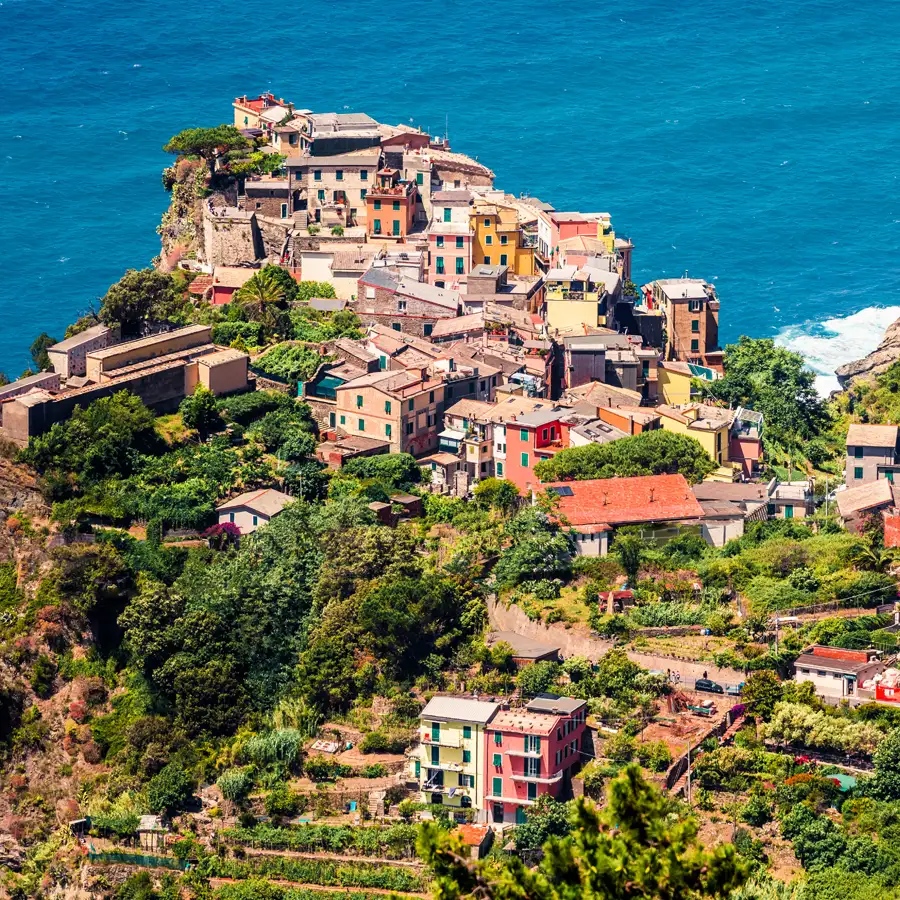
Day 2
Cinque Terre
Day 2
Cinque Terre


Morning/Mid-Day
Corniglia
Located on top of a 100-meter promontory, Corniglia is the highest of the five villages and is surrounded by a sea of olive trees and vineyards. Corniglia is the only village not to be sat on the water, and it is the least visited town in Cinque Terre, making it the perfect option for those who want to escape the crowds and enjoy a spot of peace and quiet amongst its shaded lanes. Due to its location on top of the hill, Corniglia's train station isn't located in the heart of the town like the other 4 towns in Cinque Terre. Instead, you have to take a local shuttle to the top or if you are brave enough, you can tackle the “Lardarina”, a long brick flight of steps composed of 33 flights with 382 steps! Roughly a 20 minute walk uphill. The route by stairs is very clearly marked from the train station. Begin walking down the main street called Via Fieschi and you'll immediately notice three things; fewer tourists, the scent of lemons, and multiple gelato shops! Souvenir shops adorn their doors and outdoor baskets with locally-grown lemon products, such as hand-made soups. A great way to keep the whole family happy is the Granita Limone, a slushy like cold frozen drink which can be eaten like ice cream or with a warm brioche (bread).

Corniglia Main Town Square
Enjoy the laid back vibes or a refreshing drink in the town's small but charming main square.
Show More

View Point Corniglia
Walk to tip-top of Corniglia to admire the tremendous coastal views.
Show More

Corniglia Main Town Square
Enjoy the laid back vibes or a refreshing drink in the town's small but charming main square.
Show More

View Point Corniglia
Walk to tip-top of Corniglia to admire the tremendous coastal views.
Show More

Corniglia Main Town Square
Enjoy the laid back vibes or a refreshing drink in the town's small but charming main square.
Show More

View Point Corniglia
Walk to tip-top of Corniglia to admire the tremendous coastal views.
Show More
prev
next

Day 2
Cinque Terre

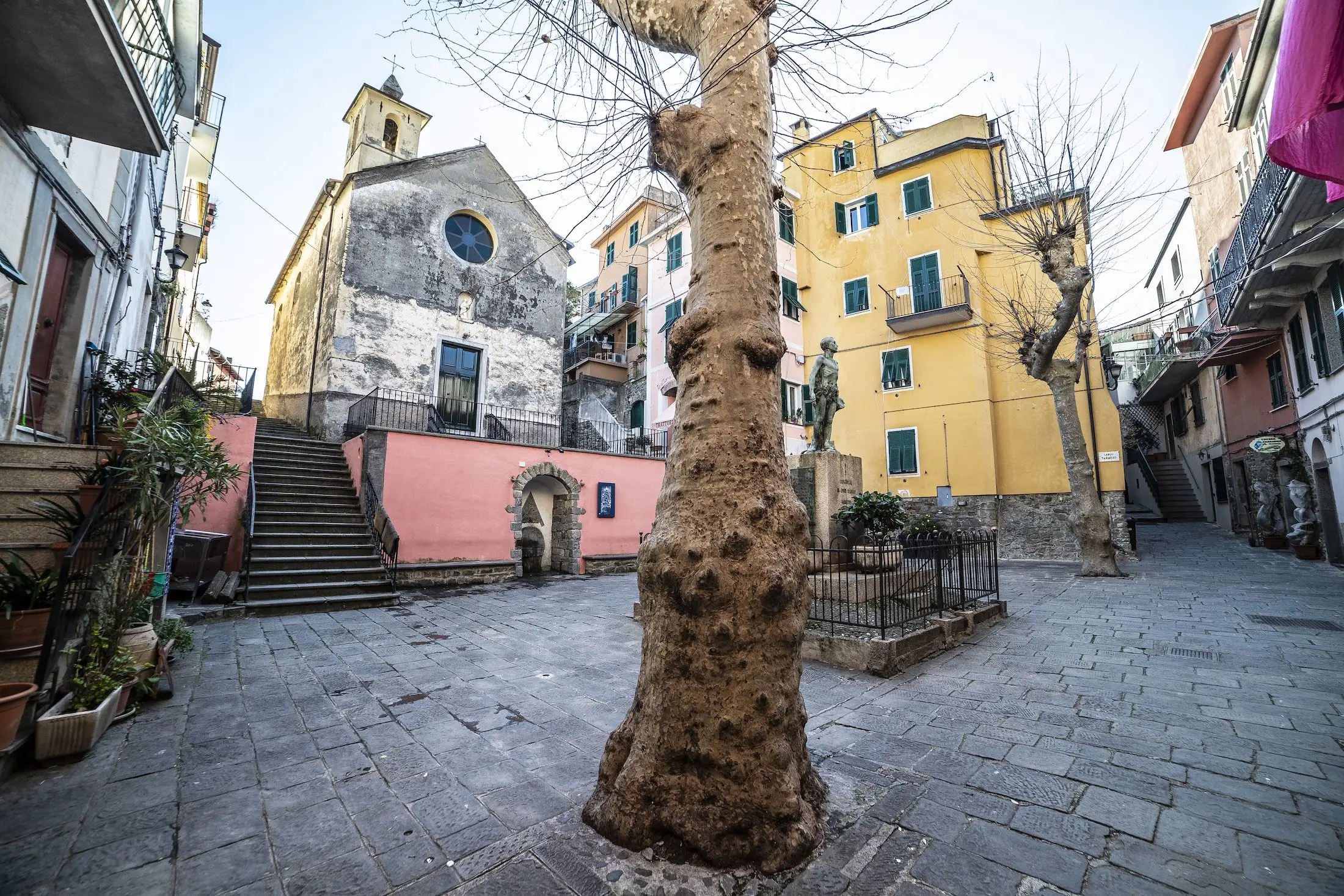
Corniglia Main Town Square
 Highlight of Corniglia
Highlight of CornigliaEnjoy the laid back vibes or a refreshing drink in the town's small but charming main square.
The life and action of the town takes place at the main square where you'll find tables and chairs fill this small space, which is centered by a Memorial to the Fallen and the town's old well. This is the beating heart of the community and on a quiet afternoon (mostly in the off-season (April and October) you'll see the town's elderly sitting on the benches after mass catching up on the local gossip, reading the newspaper or enjoying a game of cards.

View Point Corniglia
 Highlight of Corniglia
Highlight of CornigliaWalk to tip-top of Corniglia to admire the tremendous coastal views.
A small terrace at the western tip of the town provides a nice view of the coastline both to north and south, allowing you to see both the neighboring towns and the sea. Keep in mind though that this panoramic spot can be quite busy in the summer months.

Corniglia Main Town Square
 Highlight of Corniglia
Highlight of CornigliaEnjoy the laid back vibes or a refreshing drink in the town's small but charming main square.
The life and action of the town takes place at the main square where you'll find tables and chairs fill this small space, which is centered by a Memorial to the Fallen and the town's old well. This is the beating heart of the community and on a quiet afternoon (mostly in the off-season (April and October) you'll see the town's elderly sitting on the benches after mass catching up on the local gossip, reading the newspaper or enjoying a game of cards.

View Point Corniglia
 Highlight of Corniglia
Highlight of CornigliaWalk to tip-top of Corniglia to admire the tremendous coastal views.
A small terrace at the western tip of the town provides a nice view of the coastline both to north and south, allowing you to see both the neighboring towns and the sea. Keep in mind though that this panoramic spot can be quite busy in the summer months.

Corniglia Main Town Square
 Highlight of Corniglia
Highlight of CornigliaEnjoy the laid back vibes or a refreshing drink in the town's small but charming main square.
The life and action of the town takes place at the main square where you'll find tables and chairs fill this small space, which is centered by a Memorial to the Fallen and the town's old well. This is the beating heart of the community and on a quiet afternoon (mostly in the off-season (April and October) you'll see the town's elderly sitting on the benches after mass catching up on the local gossip, reading the newspaper or enjoying a game of cards.

View Point Corniglia
 Highlight of Corniglia
Highlight of CornigliaWalk to tip-top of Corniglia to admire the tremendous coastal views.
A small terrace at the western tip of the town provides a nice view of the coastline both to north and south, allowing you to see both the neighboring towns and the sea. Keep in mind though that this panoramic spot can be quite busy in the summer months.
prev
next

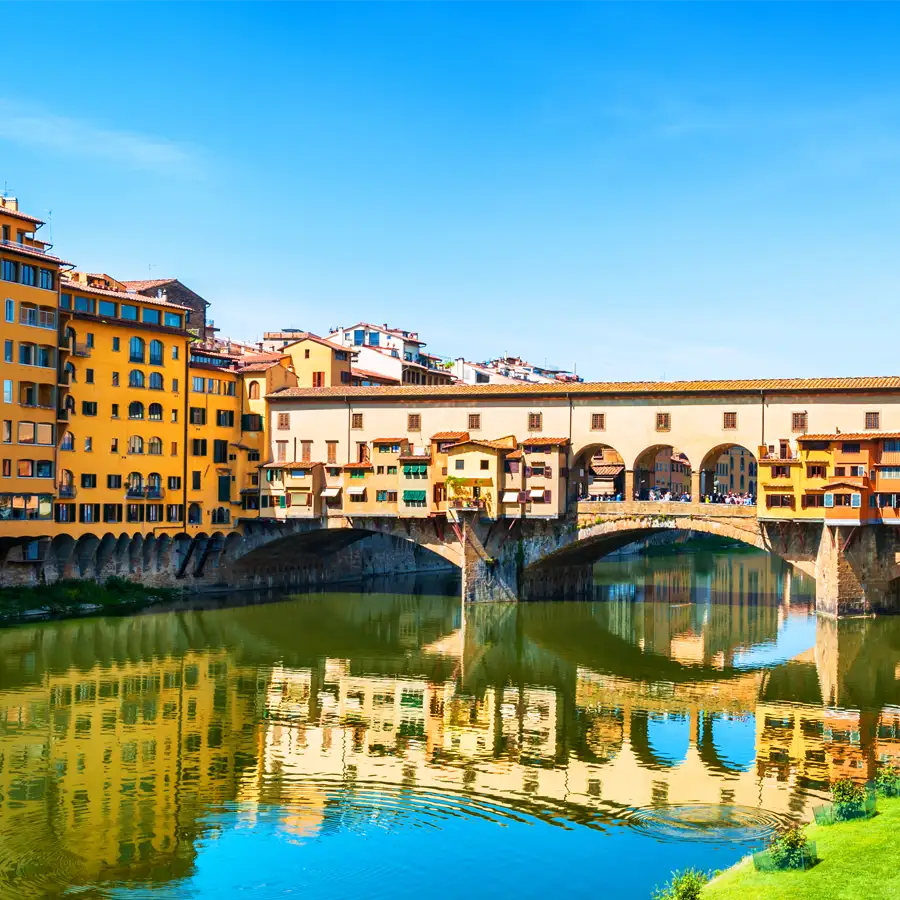
Day 3
Cinque Terre to Florence
Day 3
Cinque Terre to Florence





To Be Determined
Transfer to Rail Station

Day 3
Cinque Terre to Florence


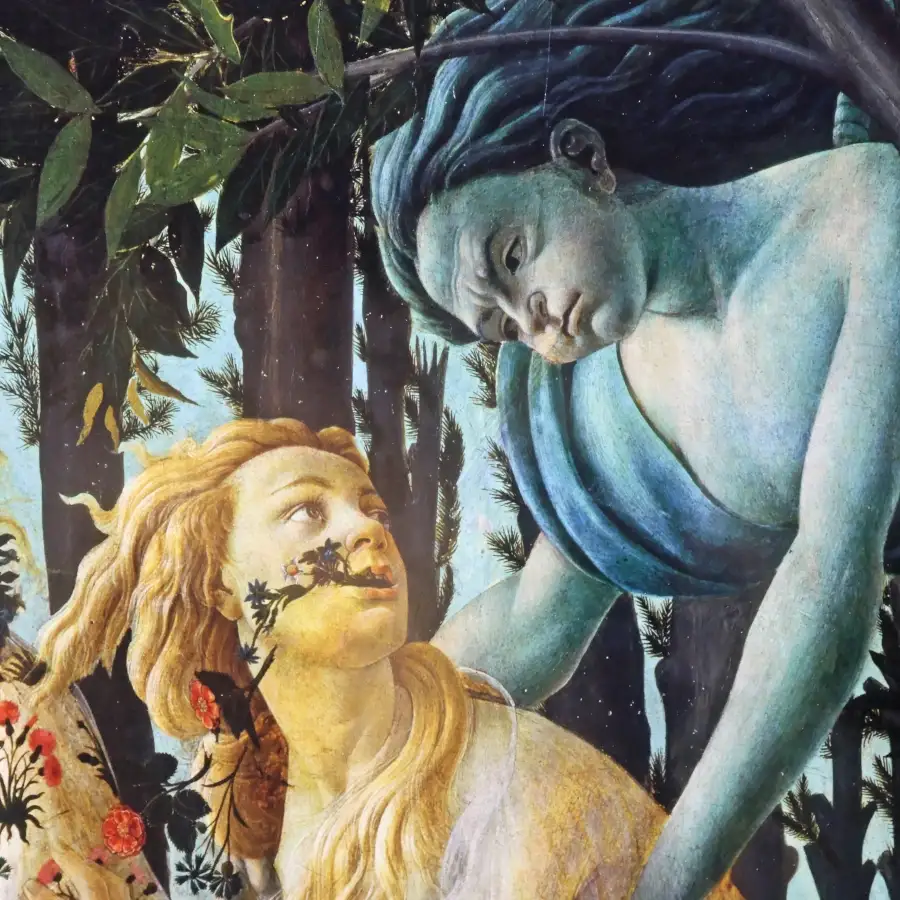
Day 4
Florence
Day 4
Florence



Morning
Uffizi Gallery
As the capital of the Renaissance, it's only fitting that Florence should also host Italy's greatest art gallery at the Uffizi. It's understandably busy throughout the year, but it's nevertheless worth the crowds to see to see some of the most sumptuous masterpieces of Renaissance art, including Botticelli's Primavera and Venus, and works by Michelangelo and Da Vinci. If you're planning to visit other galleries and museums in Florence, then it's definitely worth investing in a Firenze Card, which gives you free entry and priority access to 72 venues in the city. At a minimum, you should book ahead for the Uffizi to avoid very long queues.

Day 4
Florence



Day 5
Florence
Day 5
Florence



9:00 AM - 12:00 PM
Private Guided Walk in Florence
Enjoy a 3-hour private walking tour of Florence, the perfect introduction to the masterpieces of this city. Stroll around the historic center and take in sights such as the Palazzo Vecchio, Ponte Vecchio, Piazza Della Signora and end your tour at the famous Galleria dell'Accademia where you can enter to see Michelangelo's marble masterpiece, the statue of David.
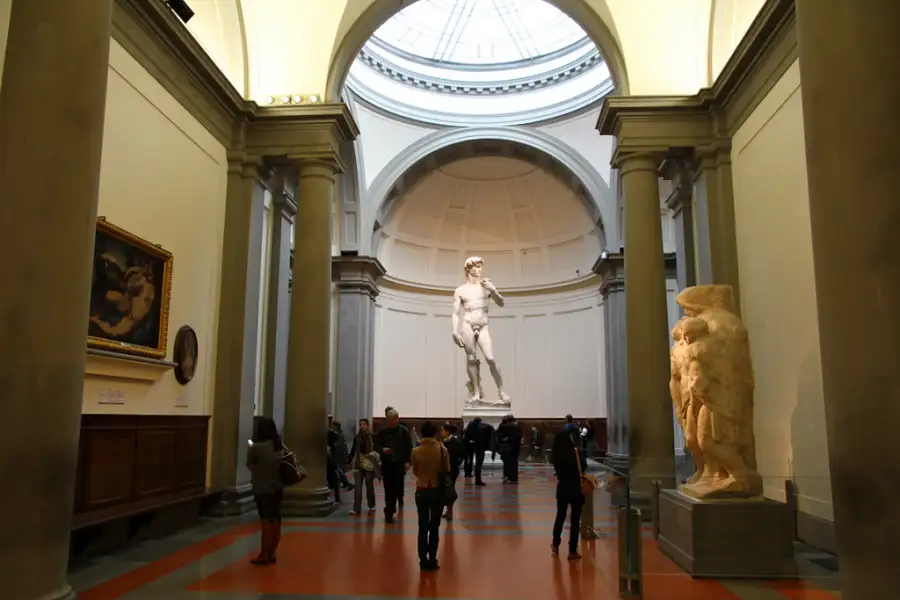
Galleria dell'Accademia
Art museum and home to Michelangelo's famous David
Show More

Galleria dell'Accademia
Art museum and home to Michelangelo's famous David
Show More

Galleria dell'Accademia
Art museum and home to Michelangelo's famous David
Show More

Galleria dell'Accademia
Art museum and home to Michelangelo's famous David
Show More

Galleria dell'Accademia
Art museum and home to Michelangelo's famous David
Show More
prev
next

Day 5
Florence


Galleria dell'Accademia
 Highlight of Private Guided Walk in Florence
Highlight of Private Guided Walk in FlorenceArt museum and home to Michelangelo's famous David
The Gallery's prized exhibits are naturally its works by Michelangelo, including in addition to David his unfinished Slaves (or Prisoners).

Galleria dell'Accademia
 Highlight of Private Guided Walk in Florence
Highlight of Private Guided Walk in FlorenceArt museum and home to Michelangelo's famous David
The Gallery's prized exhibits are naturally its works by Michelangelo, including in addition to David his unfinished Slaves (or Prisoners).

Galleria dell'Accademia
 Highlight of Private Guided Walk in Florence
Highlight of Private Guided Walk in FlorenceArt museum and home to Michelangelo's famous David
The Gallery's prized exhibits are naturally its works by Michelangelo, including in addition to David his unfinished Slaves (or Prisoners).

Galleria dell'Accademia
 Highlight of Private Guided Walk in Florence
Highlight of Private Guided Walk in FlorenceArt museum and home to Michelangelo's famous David
The Gallery's prized exhibits are naturally its works by Michelangelo, including in addition to David his unfinished Slaves (or Prisoners).

Galleria dell'Accademia
 Highlight of Private Guided Walk in Florence
Highlight of Private Guided Walk in FlorenceArt museum and home to Michelangelo's famous David
The Gallery's prized exhibits are naturally its works by Michelangelo, including in addition to David his unfinished Slaves (or Prisoners).
prev
next


Day 6
Florence
Day 6
Florence


Morning to Afternoon
Country Villas
The Medicis and other powerful families of Renaissance Florence constructed magnificent country villas in the foothills surrounding the city and surrounded them with elaborate gardens populated with rose bushes, manicured hedgerows, and citrus trees. You can explore these beautiful villas which are concentrated in an area just a short bus ride from the city center of Florence. The villas served several functions, first and foremost as country palaces demonstrating power and wealth. They were also recreational resorts for the leisure and pleasure of their owners; and, more prosaically, they were the center of agricultural activities on the surrounding estates.

Villa di Castello
See the villa where Tuscany's first Grand Duke spent his childhood.
Show More

Villa La Petraia
Experience an amazing view of Florence as you stroll the gardens of this Medici family villa.
Show More

Villa di Castello
See the villa where Tuscany's first Grand Duke spent his childhood.
Show More

Villa La Petraia
Experience an amazing view of Florence as you stroll the gardens of this Medici family villa.
Show More

Villa di Castello
See the villa where Tuscany's first Grand Duke spent his childhood.
Show More

Villa La Petraia
Experience an amazing view of Florence as you stroll the gardens of this Medici family villa.
Show More
prev
next

Day 6
Florence


Villa di Castello
 Highlight of Country Villas
Highlight of Country VillasSee the villa where Tuscany's first Grand Duke spent his childhood.
Villa di Castello is a 15th century Medici villa mostly famous as the residence where Duke Cosimo I de’Medici spent his childhood. Cosimo, who was later called the Father of the Nation, was the first member of the Medici political dynasty. Not surprisingly, Villa di Castello was his favourite villa and as an adult he expanded it with an extensive garden second only to the Boboli Gardens that included footpaths, fountains and the world famous Animal Grotto. The Villa is not accessible to the public since it has been the home of the prestigious Crusca Academy since 1583, a school dedicated to the study of the Italian language. You can, however, visit the splendid gardens without paying.

Villa La Petraia
 Highlight of Country Villas
Highlight of Country VillasExperience an amazing view of Florence as you stroll the gardens of this Medici family villa.
This fortified hilltop mansion was purchased by the Medici in the 16th century and transformed into a princely residence by Cardinal Ferdinando. The villa is richly decorated in the interior and has a beautiful Italian garden that attracts visitors from all around the world. The courtyard that is decorated with frescoes by Cosimo Daddi is probably the most impressive part of the villa, while a series of rooms you can visit present a later style. Both the structured Italian garden and the villa are open to visitors and the admission is free, with guided visits.

Villa di Castello
 Highlight of Country Villas
Highlight of Country VillasSee the villa where Tuscany's first Grand Duke spent his childhood.
Villa di Castello is a 15th century Medici villa mostly famous as the residence where Duke Cosimo I de’Medici spent his childhood. Cosimo, who was later called the Father of the Nation, was the first member of the Medici political dynasty. Not surprisingly, Villa di Castello was his favourite villa and as an adult he expanded it with an extensive garden second only to the Boboli Gardens that included footpaths, fountains and the world famous Animal Grotto. The Villa is not accessible to the public since it has been the home of the prestigious Crusca Academy since 1583, a school dedicated to the study of the Italian language. You can, however, visit the splendid gardens without paying.

Villa La Petraia
 Highlight of Country Villas
Highlight of Country VillasExperience an amazing view of Florence as you stroll the gardens of this Medici family villa.
This fortified hilltop mansion was purchased by the Medici in the 16th century and transformed into a princely residence by Cardinal Ferdinando. The villa is richly decorated in the interior and has a beautiful Italian garden that attracts visitors from all around the world. The courtyard that is decorated with frescoes by Cosimo Daddi is probably the most impressive part of the villa, while a series of rooms you can visit present a later style. Both the structured Italian garden and the villa are open to visitors and the admission is free, with guided visits.

Villa di Castello
 Highlight of Country Villas
Highlight of Country VillasSee the villa where Tuscany's first Grand Duke spent his childhood.
Villa di Castello is a 15th century Medici villa mostly famous as the residence where Duke Cosimo I de’Medici spent his childhood. Cosimo, who was later called the Father of the Nation, was the first member of the Medici political dynasty. Not surprisingly, Villa di Castello was his favourite villa and as an adult he expanded it with an extensive garden second only to the Boboli Gardens that included footpaths, fountains and the world famous Animal Grotto. The Villa is not accessible to the public since it has been the home of the prestigious Crusca Academy since 1583, a school dedicated to the study of the Italian language. You can, however, visit the splendid gardens without paying.

Villa La Petraia
 Highlight of Country Villas
Highlight of Country VillasExperience an amazing view of Florence as you stroll the gardens of this Medici family villa.
This fortified hilltop mansion was purchased by the Medici in the 16th century and transformed into a princely residence by Cardinal Ferdinando. The villa is richly decorated in the interior and has a beautiful Italian garden that attracts visitors from all around the world. The courtyard that is decorated with frescoes by Cosimo Daddi is probably the most impressive part of the villa, while a series of rooms you can visit present a later style. Both the structured Italian garden and the villa are open to visitors and the admission is free, with guided visits.
prev
next


Day 7
Depart Florence
Day 7
Depart Florence

To Be Determined
Private Transfer to Florence Airport
A private transfer service will pick you up from the N/A and take you directly to Florence Airport. This is a private transfer for you and your travel party. You do not need to pay the driver as the cost of the transfer is included in your itinerary. IMPORTANT NOTE: Please be aware the car service can fit up to 1 checked item of luggage and 1 personal item per person, such as a purse or small backpack. If you think you will have more baggage, please inform your travel consultant as this may result in an additional fee.

Day 7
Depart Florence


What's Included In Tuscany and Cinque Terre Trip

Pre-Paid Tours and Activities:
- Best of Florence: Half-Day Walking Tour
- Half Day Excursion to San Gimignano with a driver
- City Card for Cinque Terre, including discounts to many popular attractions

Pre-Paid Transportation:
- 2nd Class Train Tickets from Milan - Monterosso
- 2nd Class Train Tickets from La Spezia to Pisa
- 2nd Class Train Tickets from Pisa to Florence
- Bus Tickets from Milan Airport TBD to Milan
- Public Transport Tickets for Cinque Terre
- Private Transfer from Hotel to Florence Airport

Accommodation:
- 2 nights at a hotel of your choice in Cinque Terre
- 4 nights at a hotel of your choice in Florence

Go Real Travel Mobile App:
- Itinerary Plan & Reservations Info
- Points of Interest
- Detailed Travel Information
- Maps & Directions
Other Trips You May Like
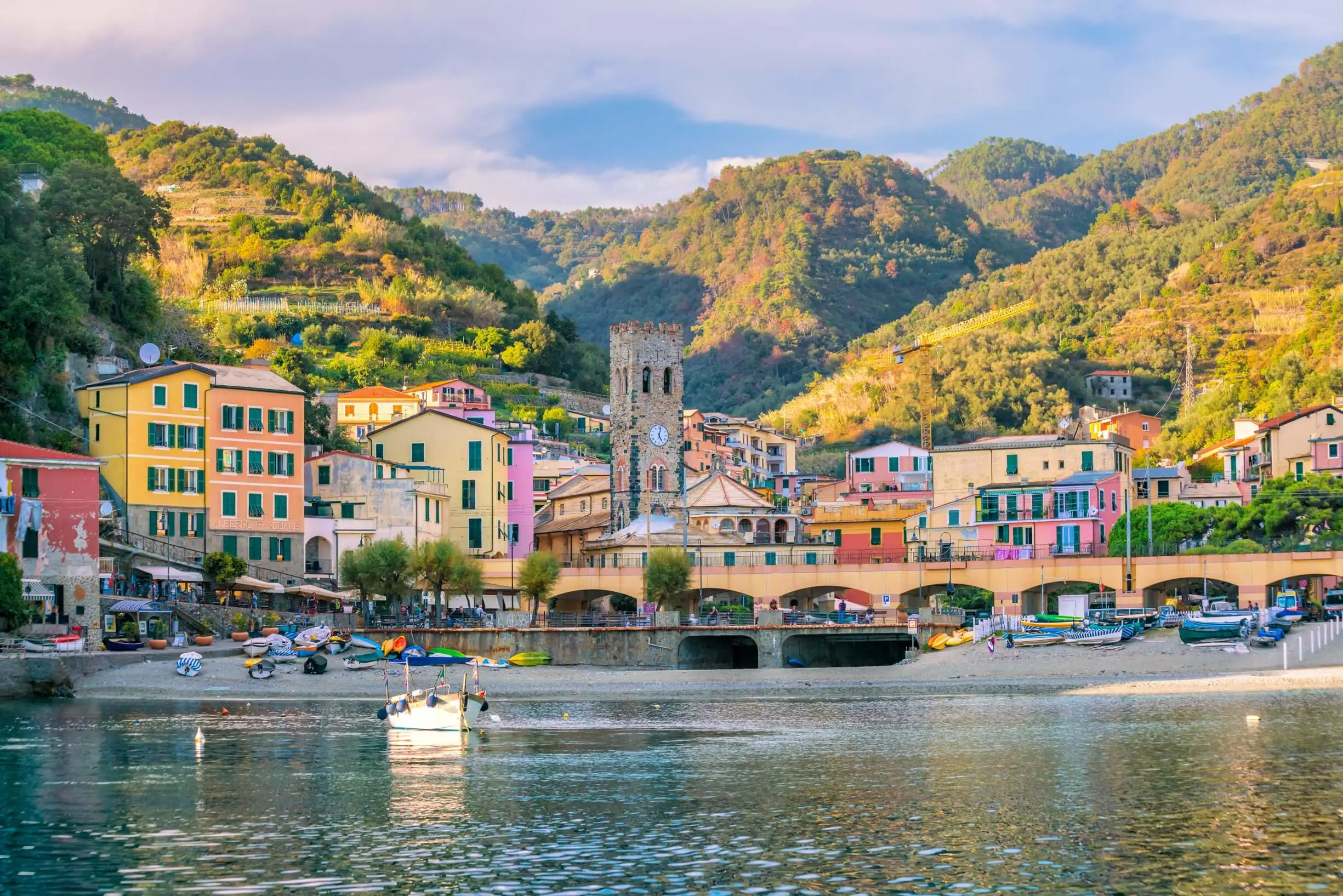
7 Days
From$998USD
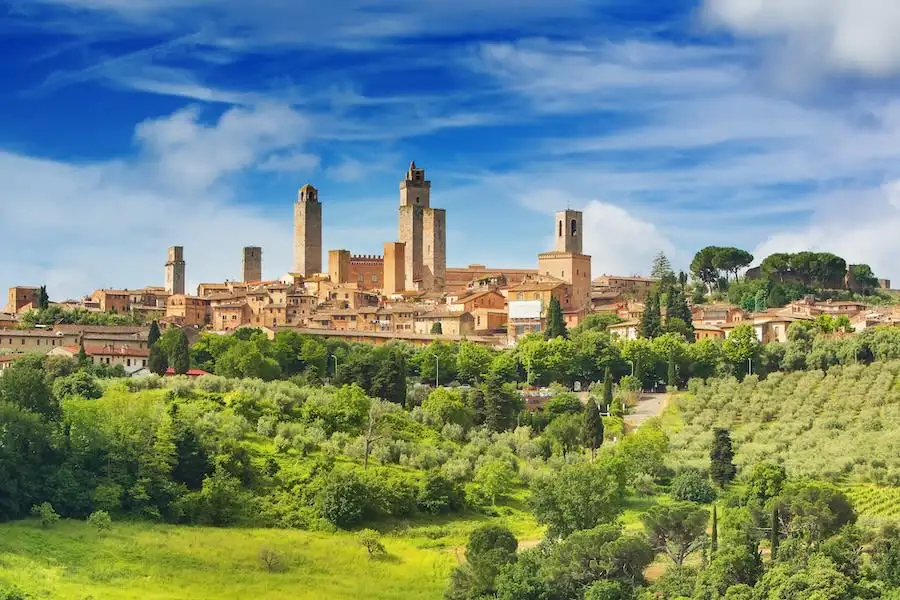
10 Days
From$2199USD
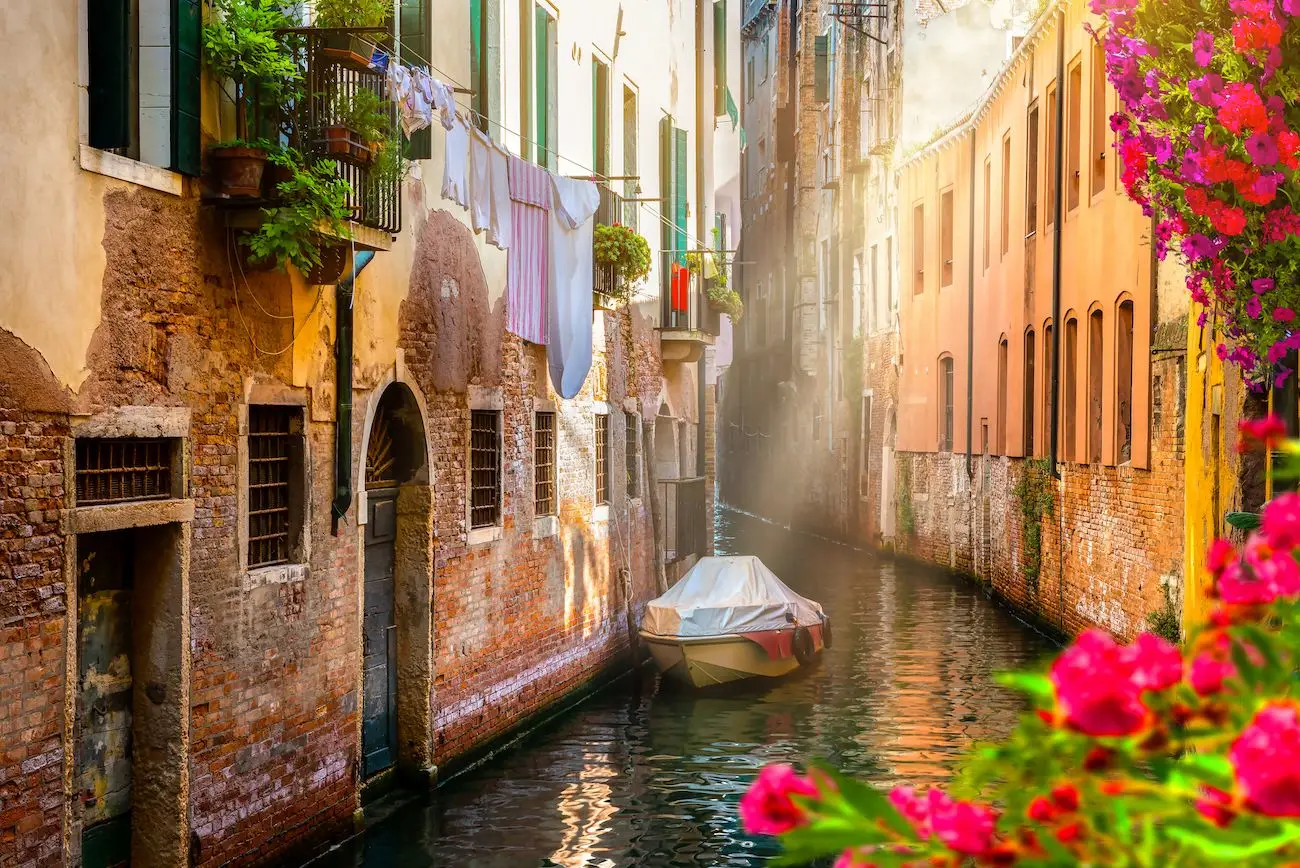
7 Days
From$2593USD

10 Days
From$2645USD
Paris, Rome, Florence: An Unforgettable 10-Day Itinerary to Europe's Most Iconic Destinations

Italy, France

10 Days
From$4600USD

21 Days
From$6990USD

7 Days
From$1995USD

4 Days
From$949USD

7 Days
From$999USD

7 Days
From$998USD

10 Days
From$2199USD

7 Days
From$2593USD

10 Days
From$2645USD
Paris, Rome, Florence: An Unforgettable 10-Day Itinerary to Europe's Most Iconic Destinations

Italy, France

10 Days
From$4600USD

21 Days
From$6990USD

7 Days
From$1995USD

4 Days
From$949USD

7 Days
From$999USD
prev
next
Featured Blogs
prev
next
Our Customers Say It Best
Marianne Strydom, Paarl, South Africa
I just wanted to thank you for organizing an amazing trip for me – I packed in so much in such a short period of time and everything was just perfect. The way you do things makes it possible to really get to know the destination, which for me as a travel agent could not have been better. 

Otto Chuy, Los Angeles, California
I am still surprised how everything worked as planned, without a hitch. All instructions in your itinerary were precise and correct. Your suggestions and comments in each of the locations we went to were very helpful. All your guides, without exception, were wonderful and exactly on time. 

Malini Dutta, Boston, Massachusetts
We can't thank you enough for the detailed plans, maps, and suggestions. It really felt that someone was holding our hands and showing us around. We had all the excitement of discovering foreign lands, with none of the problems that can happen while negotiating unfamiliar places. In fact, all the cities felt like home within a few hours of arriving and exploring. 

Bev and Mark Frankel, Williamsburg, Virginia
We could not be more pleased with Go Real Travel! You took the guess work out of things like public transport but still managed to allow us the freedom to tour as we wanted. Our guides were exceptional and every time I saw a Viking Cruise tour of 25 people, I realized the quality experience we were getting with Go Real. 

Marianne Strydom, Paarl, South Africa
I just wanted to thank you for organizing an amazing trip for me – I packed in so much in such a short period of time and everything was just perfect. The way you do things makes it possible to really get to know the destination, which for me as a travel agent could not have been better. 

Otto Chuy, Los Angeles, California
I am still surprised how everything worked as planned, without a hitch. All instructions in your itinerary were precise and correct. Your suggestions and comments in each of the locations we went to were very helpful. All your guides, without exception, were wonderful and exactly on time. 

Malini Dutta, Boston, Massachusetts
We can't thank you enough for the detailed plans, maps, and suggestions. It really felt that someone was holding our hands and showing us around. We had all the excitement of discovering foreign lands, with none of the problems that can happen while negotiating unfamiliar places. In fact, all the cities felt like home within a few hours of arriving and exploring. 

Bev and Mark Frankel, Williamsburg, Virginia
We could not be more pleased with Go Real Travel! You took the guess work out of things like public transport but still managed to allow us the freedom to tour as we wanted. Our guides were exceptional and every time I saw a Viking Cruise tour of 25 people, I realized the quality experience we were getting with Go Real. 



Explore cities in more detail

Rome
One of the must-sees of Italy, and indeed all of Europe, Rome is a city with history flowing through its veins. There is an endless amount to see, do, and learn here, with something for every taste and disposition. Rome was the center of Western civilization for a Millenium and during that time, accumulated a list of historical and cultural treasures that no other destination can truly match. The Pantheon, Colosseum, Roman Forum, and Cirus of Maxentius are just a few examples of what can be seen and experienced in Rome, which at times feels more like a giant outdoor museum than a city. At Rome’s heart, you’ll find the Vatican, home of the Roman Catholic Church and the Pope. Here visitors can see the legendary Sistine Chapel. Transcending a mere building, the chapel is a walk-in work of art. Although historical sights can be found on just about every corner, it’s entirely possible to fill a day just wandering around Rome. The city’s charming streets and open Piazzas are filled with beautiful sights and places to sit, grab the best Cappuccino in the world, and enjoy the view.

Learn About Rome
Build Rome Trip

Milan
Milan is Italy’s most forward-looking city. An international center for fashion, fine dining, and design, it seems as though Milanese people breathe style. From the gleam on your wine glass to the twists of its cathedral’s spires, everything in Milan is finished to perfection. Home to the Italian stock exchange, a world-famous fashion industry, and a frantic business district, Milan is fast-paced and commercially minded. The shopping in Milan is second to none. At the Galleria Vittorio Emanuele II, one of the world’s oldest shopping malls, a glass-iron ceiling soars over brands like Louis Vuitton, Gucci, Massimo Dutti, and Amani. Along with the fashion, Milan’s cathedral, castle, and canals are also must-sees. But to view the city’s most prized possession - Leonardo da Vinci’s Last Supper, you must make an appointment. Tickets to view this mural sell out weeks in advance. It is truly a bucket-list worthy work of art. After a day taking in all the glamor and culture, take a seat in one of Milan’s well-appointed eateries. The Navigli Quarter is packed with restaurants, bars, and cafes, perfect for a relaxed Aperol spritz or pizza along the city’s canals.

Learn About Milan
Build Milan Trip
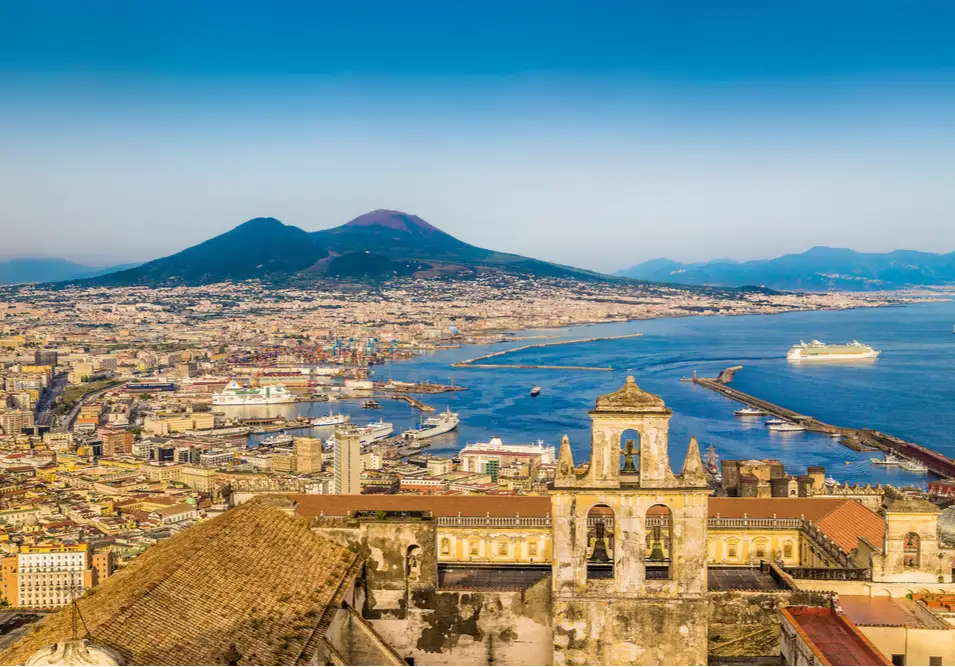
Naples
Gritty and chaotic Naples calls to travelers who want to experience the real Italy. Pressed along the coast of Campania, hilly Naples is jammed with maze-like streets, strung with outdoor clotheslines, descending toward the sea below. A much deserved UNESCO World Heritage site, Naples is famous for its churches, museums, castles, and catacombs. As you navigate the city, you’ll find yourself immersed by its culture and history. You can easily occupy a full day gazing at churches like the Naples Cathedral, San Francesco di Paola, and Cappella Sansevero. If you cast your eyes toward the Gulf of Naples, you’ll see Mount Vesuvius looming over the harbor. This foreboding volcano erupted in AD 79. Not far from the inner city — less than an hour by train — you’ll find the ancient town of Pompeii, its dramatic ruins still preserved in ash from the eruption. One of the best things you can do in Naples is to eat. This is the city where pizza was born. Propped up by its ripe tomatoes, local cheeses, and fresh fish, food from Naples has come to define what many see as the height of Italian cuisine. Everything you taste in Naples seems like a delicacy. Authentic and vivid, Naples is a true Italian city where the ancient world meets the modern-day with a bang.

Learn About Naples
Build Naples Trip

Cinque Terre
Cinque Terre, a string of five fishing villages in the Liguria region of Italy, is a rare snapshot of a traditional way of life. Rustic and charming, these clusters of pastel houses clinging to steep Mediterranean cliffs hold a special allure. Hiking between the five villages is a popular way to experience the rugged Mediterranean landscape close up. There are no roads here — the only other way to get between the villages is by boat or train. Seafood, hauled in from the azure waters of the sea that laps against the rocky shore, is abundant and delicious here. It pairs well with the local wine, and perhaps a plate of olives. Cinque Terre is a place to take it slow, to breathe in the fresh sea air and bask in the balmy climate, many miles from the chaos and frenzy of the modern world.

Learn About Cinque Terre
Build Cinque Terre Trip
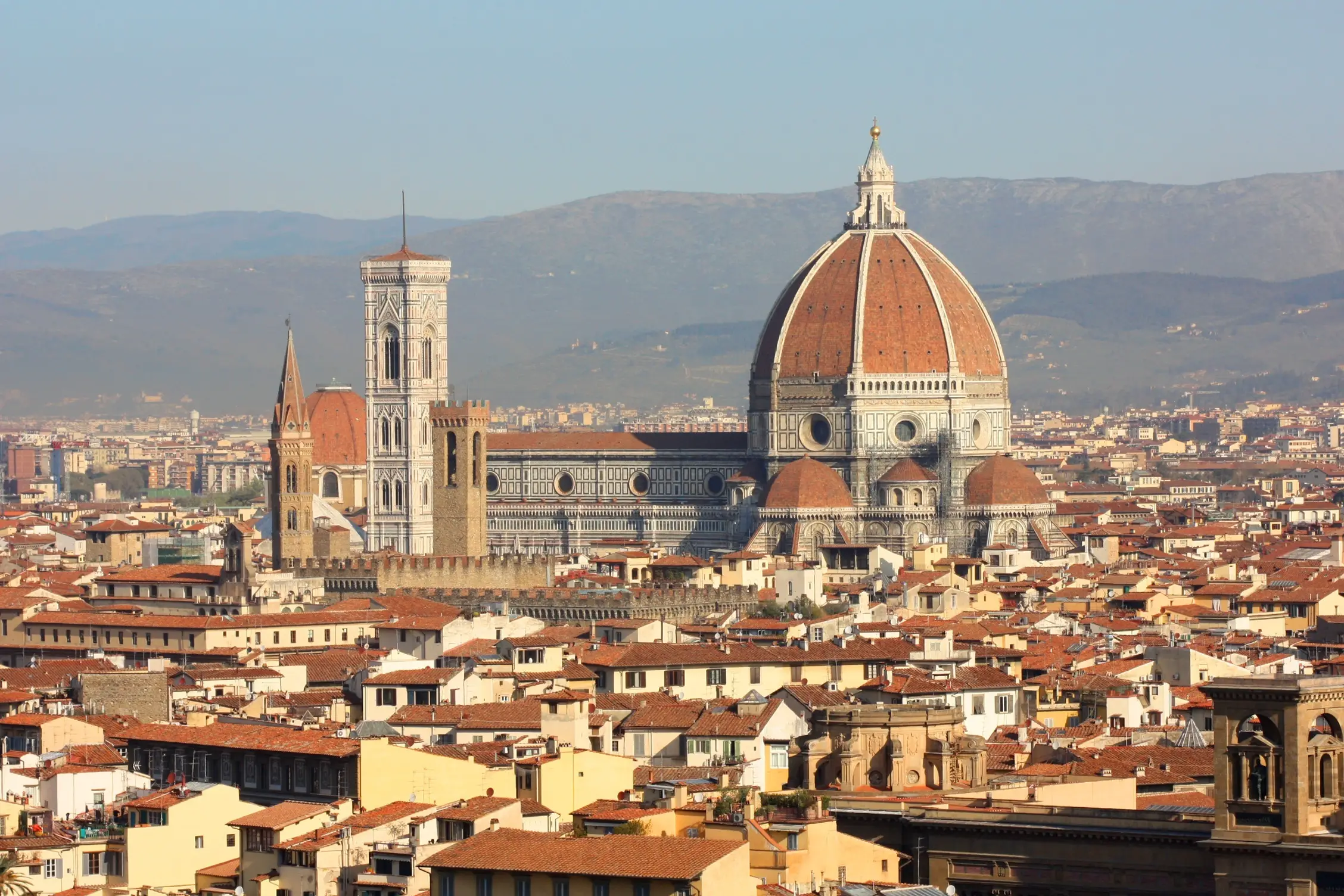
Florence
Culture and history are thick in the air in Florence. Located on the banks of the Arno River in Tuscany, Florence’s past is deeply compelling. The birthplace of the Renaissance, Florence is where innovators like Dante, Machiavelli, Michelangelo, and Da Vinci made their fortunes. Centuries of art, politics, and commerce have left their mark on every stone in this Northern Italian city. In the 15th and 16th centuries, Florentine banks funded new enterprises that went on to change the history of the world. Powerful families like the Medici’s financed some of the finest art in history and pioneered new ways of doing statecraft and politics. As you stand in the Piazzale Michelangelo and gaze upon the city below it’s hard to take it all in at once. It feels like behind every door in Florence might hide a work of genius. Michelangelo’s David and Botticelli’s Primavera can be found just a short walk away. After a long day wandering the streets and gazing at art, fueled by exquisite coffee and gelato, relax like the locals do: with a glass of some of the best wine in the world.

Learn About Florence
Build Florence Trip
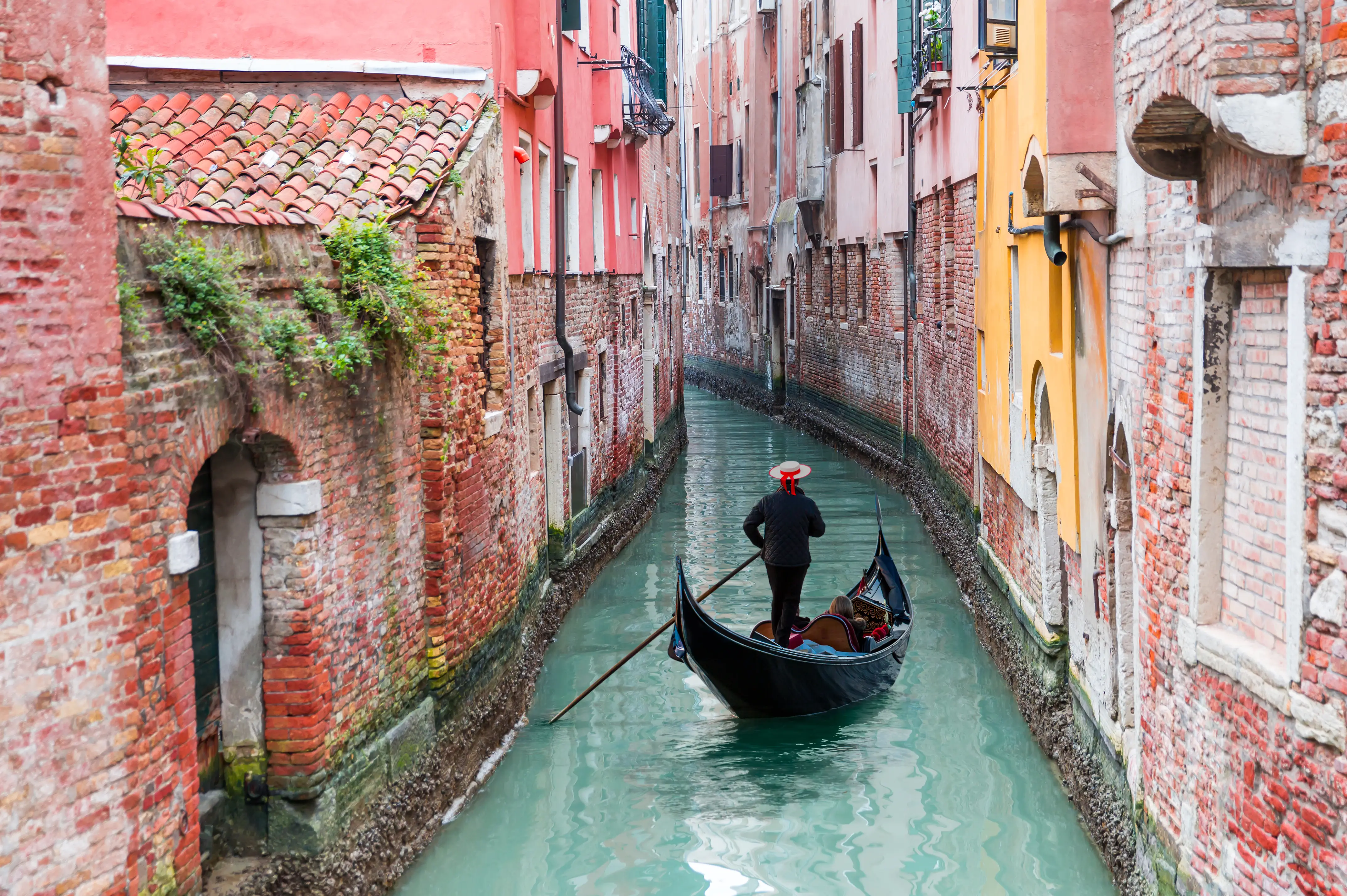
Venice
Venice is a city with no equal. Built on a series of islands on a lagoon, it was once a powerful city-state. Echoes of that old magnificence can be seen everywhere here, from the stunning buildings that rise out of the canals, to the bridges that arc across them. Take a Gondola ride through the canals that form the city’s veins, or wander through the winding streets drinking in the sights. You’ll see Venice attracts tourists in huge numbers, and that’s with good reason. It’s home to a seemingly limitless amount of art, culture, history, and architecture. St Mark’s Basilica, the Doge’s Palace, and the Campanile di San Marco just barely scratch the surface. There’s a 700-year-old market, Rialto, which is still open today. The Ponte di Rialto bridge connects the neighborhoods of San Marco and San Polo, stretching across the Grand Canal. Venice has weathered the last several centuries with elegance and pride, a place that will surpass even your highest expectations.

Learn About Venice
Build Venice Trip

Rome
One of the must-sees of Italy, and indeed all of Europe, Rome is a city with history flowing through its veins. There is an endless amount to see, do, and learn here, with something for every taste and disposition. Rome was the center of Western civilization for a Millenium and during that time, accumulated a list of historical and cultural treasures that no other destination can truly match. The Pantheon, Colosseum, Roman Forum, and Cirus of Maxentius are just a few examples of what can be seen and experienced in Rome, which at times feels more like a giant outdoor museum than a city. At Rome’s heart, you’ll find the Vatican, home of the Roman Catholic Church and the Pope. Here visitors can see the legendary Sistine Chapel. Transcending a mere building, the chapel is a walk-in work of art. Although historical sights can be found on just about every corner, it’s entirely possible to fill a day just wandering around Rome. The city’s charming streets and open Piazzas are filled with beautiful sights and places to sit, grab the best Cappuccino in the world, and enjoy the view.

Learn About Rome
Build Rome Trip

Milan
Milan is Italy’s most forward-looking city. An international center for fashion, fine dining, and design, it seems as though Milanese people breathe style. From the gleam on your wine glass to the twists of its cathedral’s spires, everything in Milan is finished to perfection. Home to the Italian stock exchange, a world-famous fashion industry, and a frantic business district, Milan is fast-paced and commercially minded. The shopping in Milan is second to none. At the Galleria Vittorio Emanuele II, one of the world’s oldest shopping malls, a glass-iron ceiling soars over brands like Louis Vuitton, Gucci, Massimo Dutti, and Amani. Along with the fashion, Milan’s cathedral, castle, and canals are also must-sees. But to view the city’s most prized possession - Leonardo da Vinci’s Last Supper, you must make an appointment. Tickets to view this mural sell out weeks in advance. It is truly a bucket-list worthy work of art. After a day taking in all the glamor and culture, take a seat in one of Milan’s well-appointed eateries. The Navigli Quarter is packed with restaurants, bars, and cafes, perfect for a relaxed Aperol spritz or pizza along the city’s canals.

Learn About Milan
Build Milan Trip

Naples
Gritty and chaotic Naples calls to travelers who want to experience the real Italy. Pressed along the coast of Campania, hilly Naples is jammed with maze-like streets, strung with outdoor clotheslines, descending toward the sea below. A much deserved UNESCO World Heritage site, Naples is famous for its churches, museums, castles, and catacombs. As you navigate the city, you’ll find yourself immersed by its culture and history. You can easily occupy a full day gazing at churches like the Naples Cathedral, San Francesco di Paola, and Cappella Sansevero. If you cast your eyes toward the Gulf of Naples, you’ll see Mount Vesuvius looming over the harbor. This foreboding volcano erupted in AD 79. Not far from the inner city — less than an hour by train — you’ll find the ancient town of Pompeii, its dramatic ruins still preserved in ash from the eruption. One of the best things you can do in Naples is to eat. This is the city where pizza was born. Propped up by its ripe tomatoes, local cheeses, and fresh fish, food from Naples has come to define what many see as the height of Italian cuisine. Everything you taste in Naples seems like a delicacy. Authentic and vivid, Naples is a true Italian city where the ancient world meets the modern-day with a bang.

Learn About Naples
Build Naples Trip

Cinque Terre
Cinque Terre, a string of five fishing villages in the Liguria region of Italy, is a rare snapshot of a traditional way of life. Rustic and charming, these clusters of pastel houses clinging to steep Mediterranean cliffs hold a special allure. Hiking between the five villages is a popular way to experience the rugged Mediterranean landscape close up. There are no roads here — the only other way to get between the villages is by boat or train. Seafood, hauled in from the azure waters of the sea that laps against the rocky shore, is abundant and delicious here. It pairs well with the local wine, and perhaps a plate of olives. Cinque Terre is a place to take it slow, to breathe in the fresh sea air and bask in the balmy climate, many miles from the chaos and frenzy of the modern world.

Learn About Cinque Terre
Build Cinque Terre Trip

Florence
Culture and history are thick in the air in Florence. Located on the banks of the Arno River in Tuscany, Florence’s past is deeply compelling. The birthplace of the Renaissance, Florence is where innovators like Dante, Machiavelli, Michelangelo, and Da Vinci made their fortunes. Centuries of art, politics, and commerce have left their mark on every stone in this Northern Italian city. In the 15th and 16th centuries, Florentine banks funded new enterprises that went on to change the history of the world. Powerful families like the Medici’s financed some of the finest art in history and pioneered new ways of doing statecraft and politics. As you stand in the Piazzale Michelangelo and gaze upon the city below it’s hard to take it all in at once. It feels like behind every door in Florence might hide a work of genius. Michelangelo’s David and Botticelli’s Primavera can be found just a short walk away. After a long day wandering the streets and gazing at art, fueled by exquisite coffee and gelato, relax like the locals do: with a glass of some of the best wine in the world.

Learn About Florence
Build Florence Trip

Venice
Venice is a city with no equal. Built on a series of islands on a lagoon, it was once a powerful city-state. Echoes of that old magnificence can be seen everywhere here, from the stunning buildings that rise out of the canals, to the bridges that arc across them. Take a Gondola ride through the canals that form the city’s veins, or wander through the winding streets drinking in the sights. You’ll see Venice attracts tourists in huge numbers, and that’s with good reason. It’s home to a seemingly limitless amount of art, culture, history, and architecture. St Mark’s Basilica, the Doge’s Palace, and the Campanile di San Marco just barely scratch the surface. There’s a 700-year-old market, Rialto, which is still open today. The Ponte di Rialto bridge connects the neighborhoods of San Marco and San Polo, stretching across the Grand Canal. Venice has weathered the last several centuries with elegance and pride, a place that will surpass even your highest expectations.

Learn About Venice
Build Venice Trip
prev
next


 Map of Your Itinerary Route
Map of Your Itinerary Route
Zoom In to the cities to see your itinerary in more detail


 4.8
4.8 